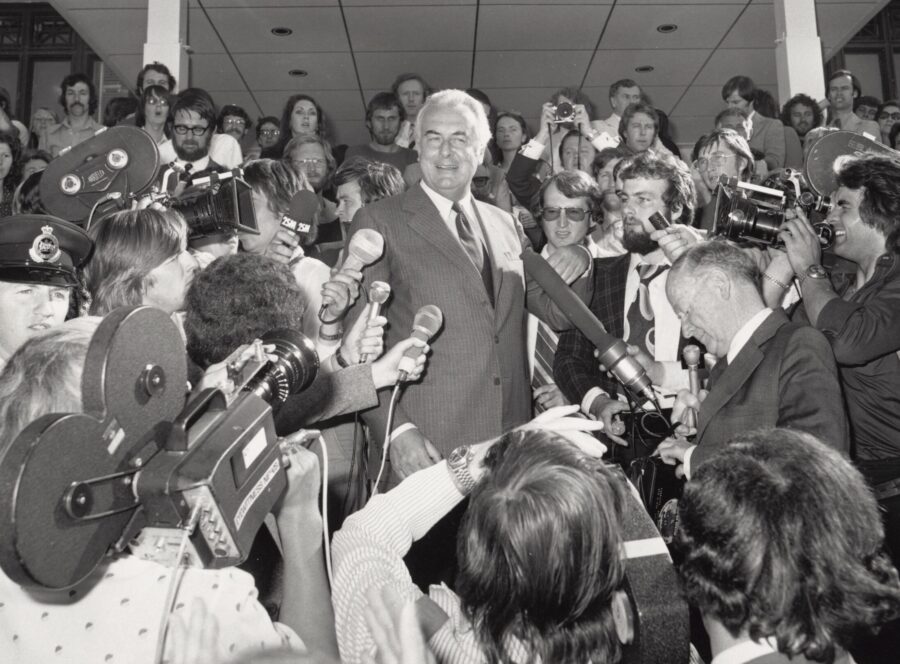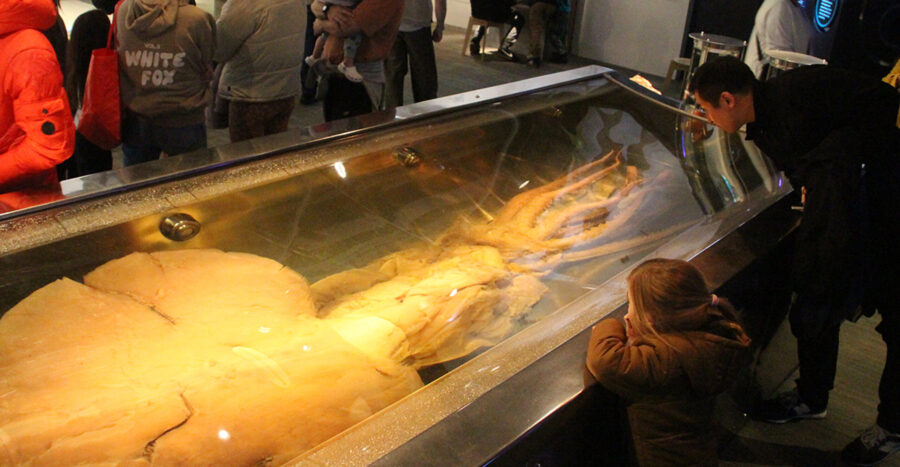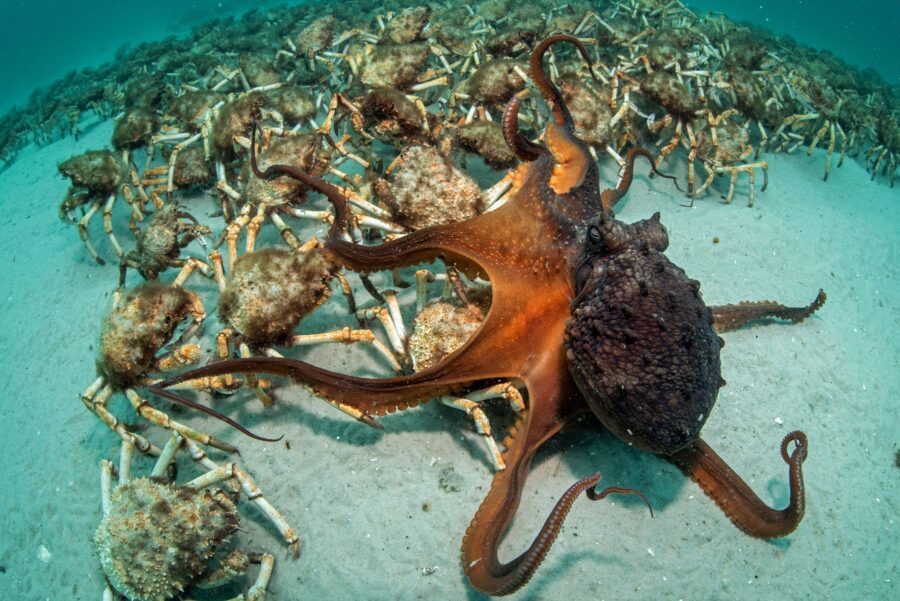In pursuit of pollinators
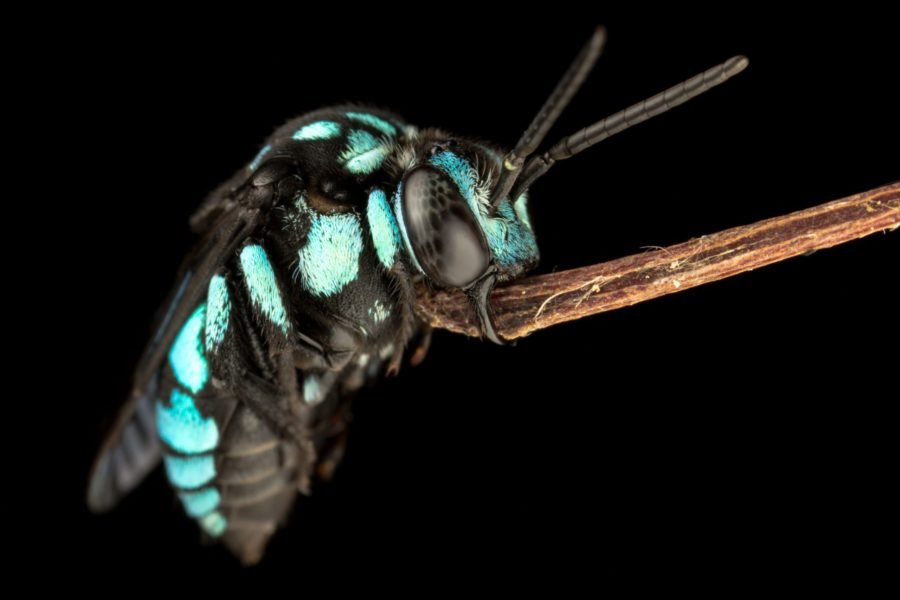
UNDER THE OPPRESSIVE heat of the afternoon sun, three days since I’ve found my last bee, I pull off the Stuart Highway near Alice Springs, in the Northern Territory, and park in the shade of a flowering gum. Almost instantly, the rumble of my campervan’s diesel engine is replaced with an urgent humming. I can’t help but smile as I hurriedly reach for my butterfly net and scramble out of the van.
I’m in luck; swarms of bees cluster above my head, some searching for mates and others eagerly collecting pollen and drinking nectar from the gum’s white blossoms. I wave my net through the swarm, catching dozens, and then carefully unfurl the soft netting to inspect my catch. I’ve captured three different species including a female Xanthesma flava, a striking yellow-orange and black bee. I reach into the net with a collection vial, careful not to offend a bee and earn a sting, and capture eight specimens. Finally, pockets buzzing, I head back to the van.
As I pull back onto the highway, I have only one thing on my mind: viewing the astounding intricacy and beauty of the bees up close. In a few short hours, at a campsite half a day’s drive north of Alice Springs, I will see their complexity in full as I inspect them closely through a macro lens, the twin flashes of my camera lighting up an otherwise undisturbed night.
I enrolled in an entomology subject, and, during an insect-collection assignment, found an amazing 34 different native bee species on a single melaleuca tree outside my house in suburban Brisbane. Looking through my lens at the intricate details of the bees –seeing the tiny hairs covering and colouring their bodies, the vibrant iridescence splayed across their wings, and the artisanal sculpting of their exoskeletons – was mesmerising. I was hooked.
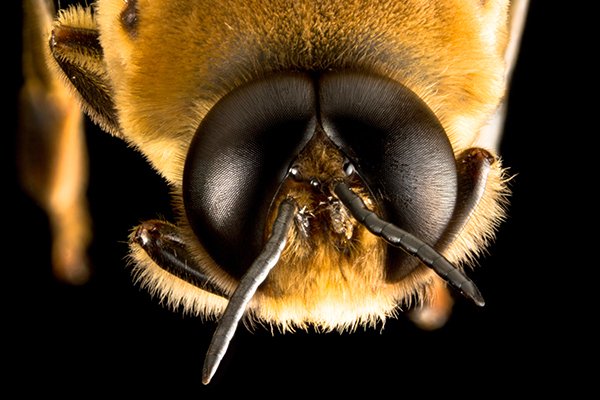
The well-developed eyes of a drone European honeybee (Apis mellifera) are for spotting a flying virgin queen with which to mate. If he’s successful, the price will be high – his reproductive organs will rupture, killing him. (Image Credit: James Dorey)
THERE ARE MANY REASONS people drive around Australia, but my motivation for spending more than three and a half months on the road was a little unusual. In 2015 I set out from my Byron Bay home, in northern NSW, to cover more than 26,000km in search of native bees. With my old Canon DSLR, three lenses, two flashes, a collection of butterfly nets (only one of which made it home in one piece) and countless insect containers, I set out to collect and photograph as many different bee species as I could, travelling to every state and territory along the way.
I became interested in bees during my second year of a science degree at the University of Queensland. I was specialising in ecology and zoology and had a broad interest in nature, studying everything from birds to mammals, reptiles to fish, and plants. At the time, I didn’t have a particular fascination for the insect world, yet things changed quickly when I got my hands on my first macro lens. This second-hand 100mm lens opened my eyes to a world I hadn’t yet discovered. I began focusing my attention on minutiae, and for the first time in my life became enthralled by the captivating world of insects.
I enrolled in an entomology subject, and, during an insect-collection assignment, found an amazing 34 different native bee species on a single melaleuca tree outside my house in suburban Brisbane. Looking through my lens at the intricate details of the bees –seeing the tiny hairs covering and colouring their bodies, the vibrant iridescence splayed across their wings, and the artisanal sculpting of their exoskeletons – was mesmerising. I was hooked.
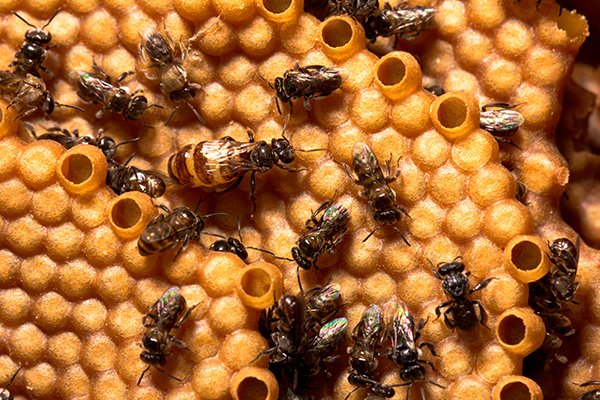
A queen sugarbag bee (Tetragonula sp.) walks among her much smaller nest mates. For the recently emerged (lighter-coloured) individuals, it is too early to leave the nest. (Image Credit: James Dorey)
HERE ARE MORE THAN 1600 described native bees in Australia, and an estimated 25,000 bee species worldwide. They are an extremely important group of animals and are wildly diverse in species, shape, size, colour and biology. Bees are the principle pollinators of many natural and agricultural systems. They pollinate almost 90 per cent of all the flowering plants on the planet.
The vast majority are solitary or semi-solitary, with many species making their nests in the ground or in hollow branches and twigs. The truly social and honey-producing bees that most of us think about when we hear the word ‘bee’ – such as the European honeybee and our own native stingless bees – are, in fact, a rarity.
There is much to celebrate about these amazing creatures, yet so little is known, especially about our Australian natives. I wanted to find a way to share how diverse and intricate these industrious little pollinators are, while also helping researchers learn more about them. For me, the best way to do this was to jump in my campervan and travel across the country, photographing as many species as possible.
During my time on the road, I photographed 206 bees, representing more than 130 species. I also collected specimens for researchers at the South Australian Museum. I’m sure I raised more than a few eyebrows along the way, particularly on afternoons when I would be waving my butterfly nets about on roadsides, or on nights in quiet camping grounds when my campervan would light up for hours on end with frequent camera flashes.
What amazed me most about my journey was that I was able to find bees almost everywhere I went, from the coastal plains and mountain ranges of northern NSW, to SA’s sea cliffs; from WA’s wheatfields, to the deserts surrounding Lake Eyre, in north-eastern SA; and from the Australian Alps’ snow- gum forests, to the inundated tropical landscapes of the Top End. Wherever I went, tenacious and hard-working bees were there.
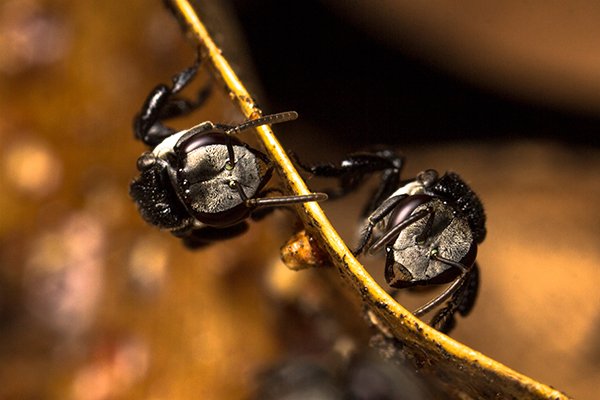
After emerging from their hive, which is created from an unusual mix of resin and fallen leaves, these females are ready to fly off on their next foraging excursion.(Image Credit: James Dorey)
This article was originally published in the May-June issue of Australian Geographic (AG#139).
READ MORE:
